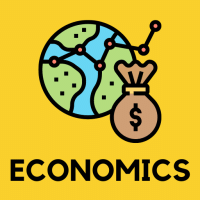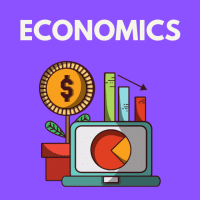Commerce Exam > Commerce Questions > In a market economy, the central problems are...
Start Learning for Free
In a market economy, the central problems are solved by
- a)Supply of goods
- b)Planning authority
- c)Demand for goods
- d)Market mechanism
Correct answer is option 'D'. Can you explain this answer?
Verified Answer
In a market economy, the central problems are solved bya) Supply of go...
To solve the problems through market or price mechanism ie., what goods are to be produced and what quantities, which methods for production are to be employed for the production of goods and how the output is to be distributed, should be decided by the free play of the forces of demand and supply.
Most Upvoted Answer
In a market economy, the central problems are solved bya) Supply of go...
Capital economy is also called market economy or free trade economy....market forces like demand supply and prices that drives the capitalist economy.......
Free Test
FREE
| Start Free Test |
Community Answer
In a market economy, the central problems are solved bya) Supply of go...
The correct answer is option 'D' - Market mechanism.
Market economy, also known as a free market economy or capitalism, is an economic system where the central problems of what to produce, how to produce, and for whom to produce are primarily solved by the market mechanism. Let's delve into the details of why the market mechanism is the correct answer:
Market Mechanism in a Market Economy:
1. Definition and Function:
- The market mechanism refers to the interaction of supply and demand forces in determining the allocation and pricing of goods and services.
- It functions through the forces of supply and demand, where buyers and sellers freely engage in trade based on their own self-interests.
2. Allocation of Resources:
- In a market economy, the market mechanism plays a crucial role in allocating resources efficiently.
- Through the price mechanism, resources are allocated to the production of goods and services that are in demand by consumers.
- If there is a high demand for a particular product, prices will rise, signaling producers to allocate more resources to its production. Conversely, if there is low demand, prices will fall, indicating producers to reduce resources.
3. Determination of Prices:
- Prices in a market economy are determined by the interaction of supply and demand.
- Supply represents the quantity of goods and services producers are willing to offer at a given price, while demand represents the quantity consumers are willing to buy at a given price.
- When supply and demand are in equilibrium (i.e., they intersect at a specific price), this price becomes the market price, reflecting the value and scarcity of the product.
4. Consumer Sovereignty:
- The market mechanism in a market economy upholds the principle of consumer sovereignty.
- Consumers have the freedom to choose and determine the goods and services they want to buy based on their preferences, needs, and purchasing power.
- Producers, in turn, respond to consumer demand by adjusting their production and innovation to cater to consumer preferences.
5. Profit Motive:
- In a market economy, the profit motive drives the behavior of producers and resource owners.
- Producers aim to maximize their profits by producing goods and services that are in demand and at prices that cover their costs.
- Resource owners, such as labor and capital, are incentivized to supply their resources to the production process where they can earn the highest returns.
In conclusion, in a market economy, the central problems of what to produce, how to produce, and for whom to produce are effectively addressed by the market mechanism. Through the interaction of supply and demand forces, the market mechanism enables the efficient allocation of resources, determination of prices, consumer sovereignty, and the pursuit of profit.
Market economy, also known as a free market economy or capitalism, is an economic system where the central problems of what to produce, how to produce, and for whom to produce are primarily solved by the market mechanism. Let's delve into the details of why the market mechanism is the correct answer:
Market Mechanism in a Market Economy:
1. Definition and Function:
- The market mechanism refers to the interaction of supply and demand forces in determining the allocation and pricing of goods and services.
- It functions through the forces of supply and demand, where buyers and sellers freely engage in trade based on their own self-interests.
2. Allocation of Resources:
- In a market economy, the market mechanism plays a crucial role in allocating resources efficiently.
- Through the price mechanism, resources are allocated to the production of goods and services that are in demand by consumers.
- If there is a high demand for a particular product, prices will rise, signaling producers to allocate more resources to its production. Conversely, if there is low demand, prices will fall, indicating producers to reduce resources.
3. Determination of Prices:
- Prices in a market economy are determined by the interaction of supply and demand.
- Supply represents the quantity of goods and services producers are willing to offer at a given price, while demand represents the quantity consumers are willing to buy at a given price.
- When supply and demand are in equilibrium (i.e., they intersect at a specific price), this price becomes the market price, reflecting the value and scarcity of the product.
4. Consumer Sovereignty:
- The market mechanism in a market economy upholds the principle of consumer sovereignty.
- Consumers have the freedom to choose and determine the goods and services they want to buy based on their preferences, needs, and purchasing power.
- Producers, in turn, respond to consumer demand by adjusting their production and innovation to cater to consumer preferences.
5. Profit Motive:
- In a market economy, the profit motive drives the behavior of producers and resource owners.
- Producers aim to maximize their profits by producing goods and services that are in demand and at prices that cover their costs.
- Resource owners, such as labor and capital, are incentivized to supply their resources to the production process where they can earn the highest returns.
In conclusion, in a market economy, the central problems of what to produce, how to produce, and for whom to produce are effectively addressed by the market mechanism. Through the interaction of supply and demand forces, the market mechanism enables the efficient allocation of resources, determination of prices, consumer sovereignty, and the pursuit of profit.

|
Explore Courses for Commerce exam
|

|
Question Description
In a market economy, the central problems are solved bya) Supply of goodsb) Planning authorityc) Demand for goodsd) Market mechanismCorrect answer is option 'D'. Can you explain this answer? for Commerce 2025 is part of Commerce preparation. The Question and answers have been prepared according to the Commerce exam syllabus. Information about In a market economy, the central problems are solved bya) Supply of goodsb) Planning authorityc) Demand for goodsd) Market mechanismCorrect answer is option 'D'. Can you explain this answer? covers all topics & solutions for Commerce 2025 Exam. Find important definitions, questions, meanings, examples, exercises and tests below for In a market economy, the central problems are solved bya) Supply of goodsb) Planning authorityc) Demand for goodsd) Market mechanismCorrect answer is option 'D'. Can you explain this answer?.
In a market economy, the central problems are solved bya) Supply of goodsb) Planning authorityc) Demand for goodsd) Market mechanismCorrect answer is option 'D'. Can you explain this answer? for Commerce 2025 is part of Commerce preparation. The Question and answers have been prepared according to the Commerce exam syllabus. Information about In a market economy, the central problems are solved bya) Supply of goodsb) Planning authorityc) Demand for goodsd) Market mechanismCorrect answer is option 'D'. Can you explain this answer? covers all topics & solutions for Commerce 2025 Exam. Find important definitions, questions, meanings, examples, exercises and tests below for In a market economy, the central problems are solved bya) Supply of goodsb) Planning authorityc) Demand for goodsd) Market mechanismCorrect answer is option 'D'. Can you explain this answer?.
Solutions for In a market economy, the central problems are solved bya) Supply of goodsb) Planning authorityc) Demand for goodsd) Market mechanismCorrect answer is option 'D'. Can you explain this answer? in English & in Hindi are available as part of our courses for Commerce.
Download more important topics, notes, lectures and mock test series for Commerce Exam by signing up for free.
Here you can find the meaning of In a market economy, the central problems are solved bya) Supply of goodsb) Planning authorityc) Demand for goodsd) Market mechanismCorrect answer is option 'D'. Can you explain this answer? defined & explained in the simplest way possible. Besides giving the explanation of
In a market economy, the central problems are solved bya) Supply of goodsb) Planning authorityc) Demand for goodsd) Market mechanismCorrect answer is option 'D'. Can you explain this answer?, a detailed solution for In a market economy, the central problems are solved bya) Supply of goodsb) Planning authorityc) Demand for goodsd) Market mechanismCorrect answer is option 'D'. Can you explain this answer? has been provided alongside types of In a market economy, the central problems are solved bya) Supply of goodsb) Planning authorityc) Demand for goodsd) Market mechanismCorrect answer is option 'D'. Can you explain this answer? theory, EduRev gives you an
ample number of questions to practice In a market economy, the central problems are solved bya) Supply of goodsb) Planning authorityc) Demand for goodsd) Market mechanismCorrect answer is option 'D'. Can you explain this answer? tests, examples and also practice Commerce tests.

|
Explore Courses for Commerce exam
|

|
Signup for Free!
Signup to see your scores go up within 7 days! Learn & Practice with 1000+ FREE Notes, Videos & Tests.
























